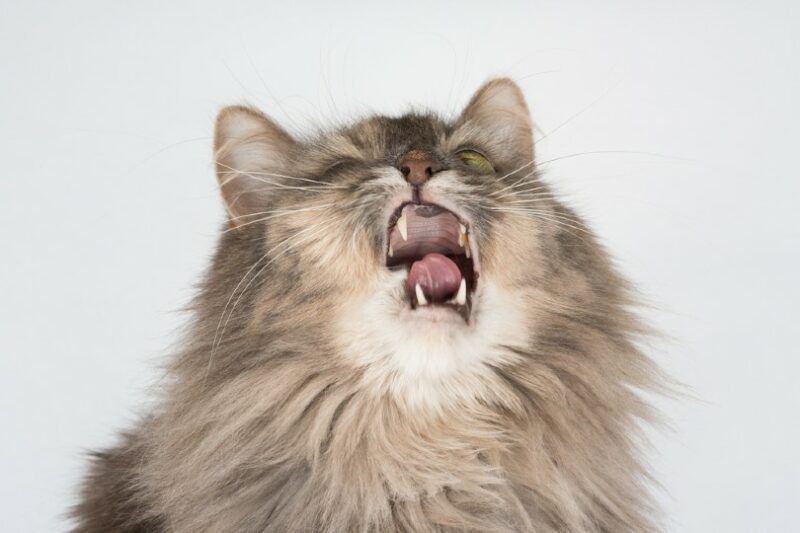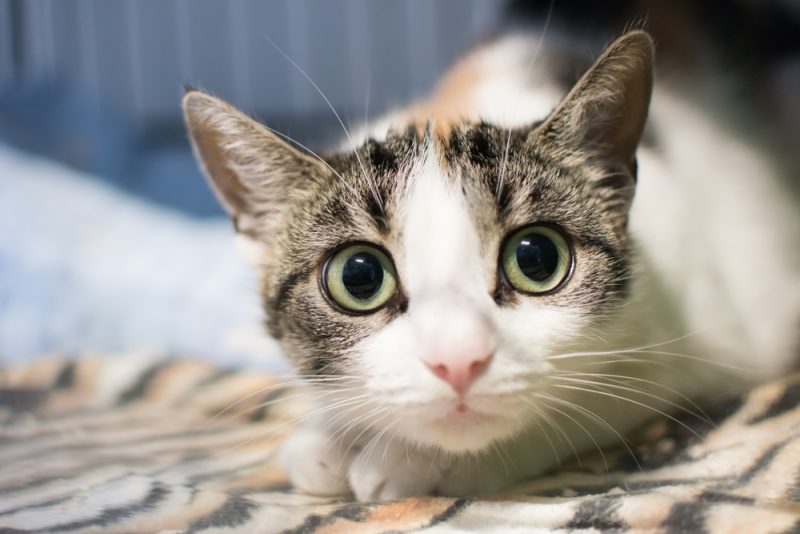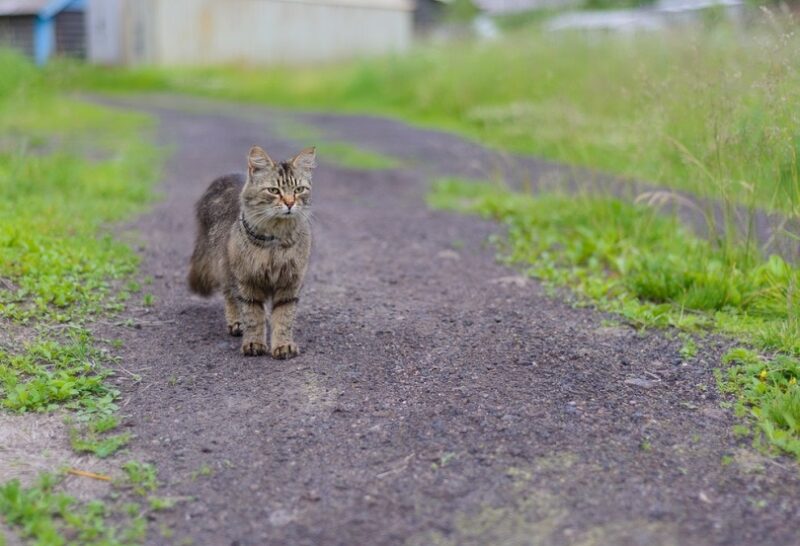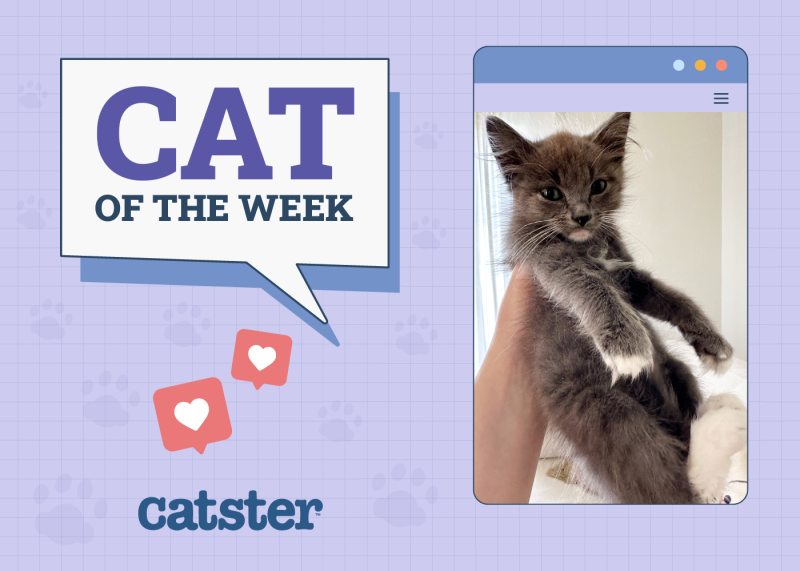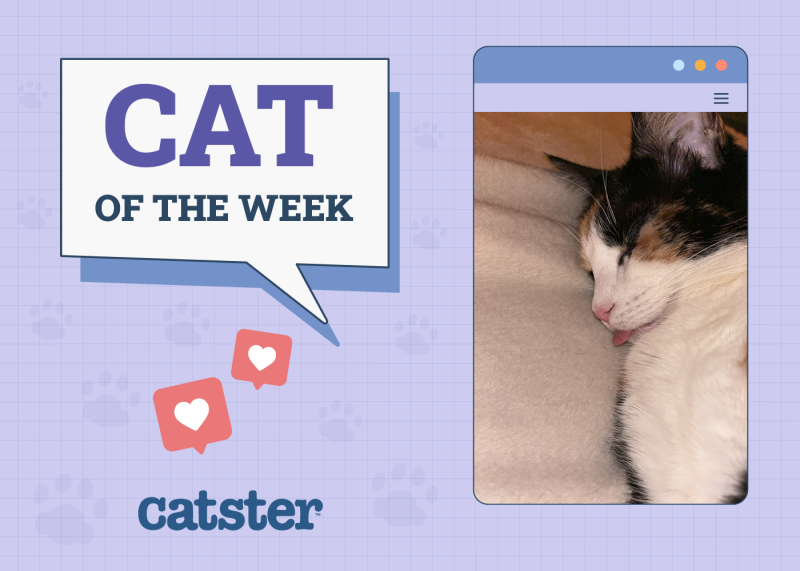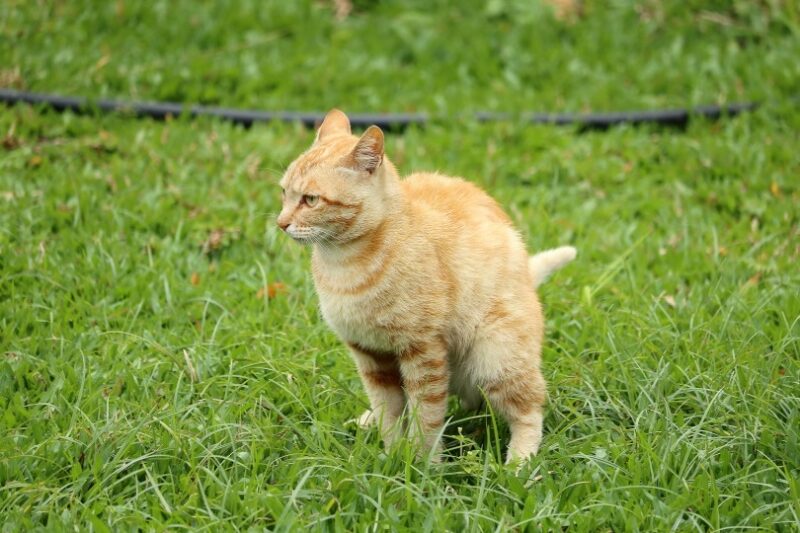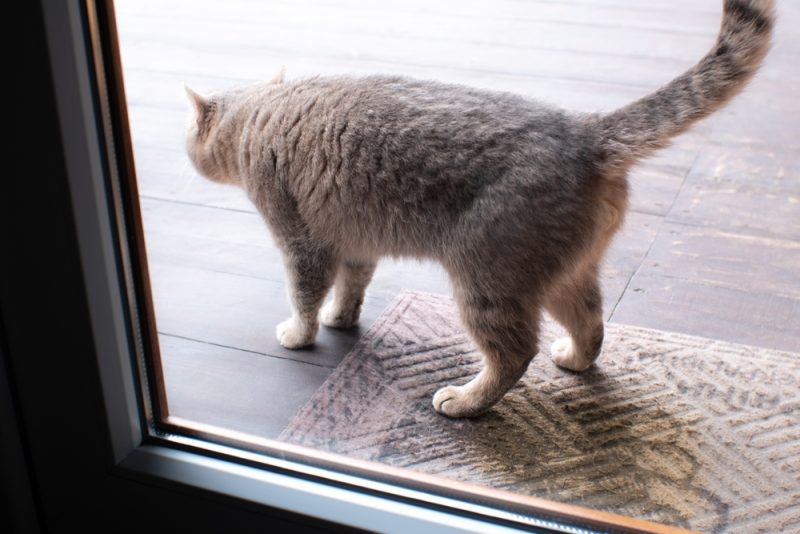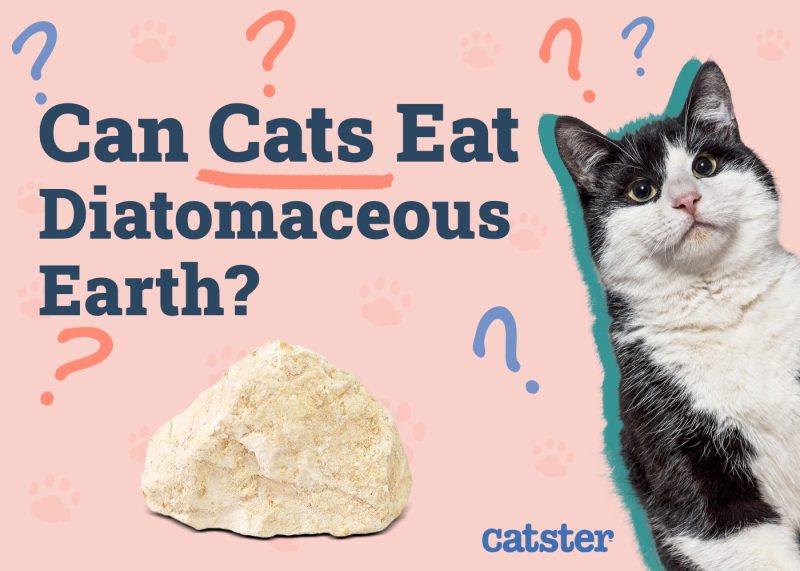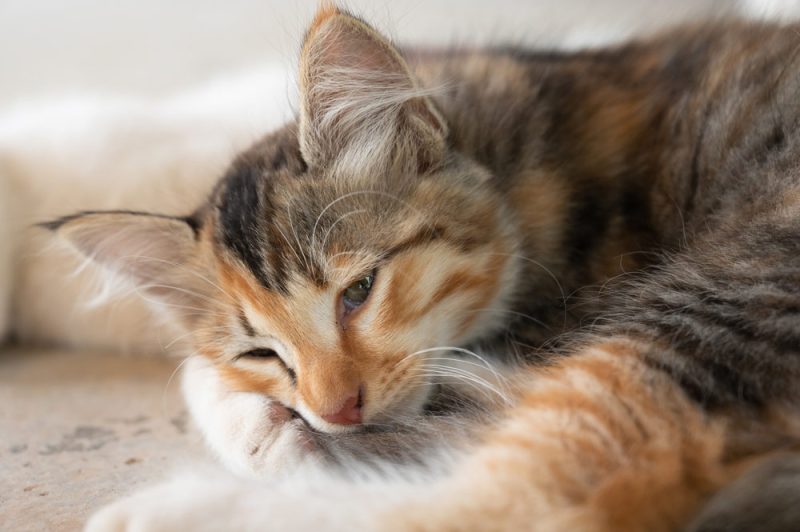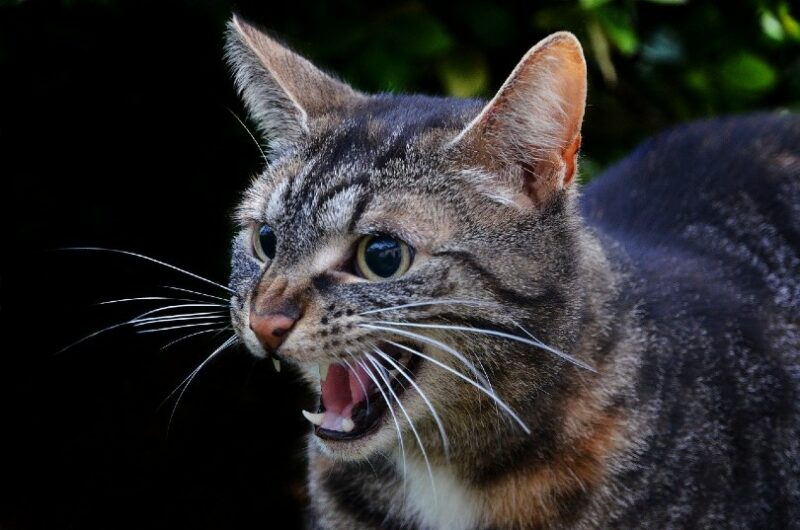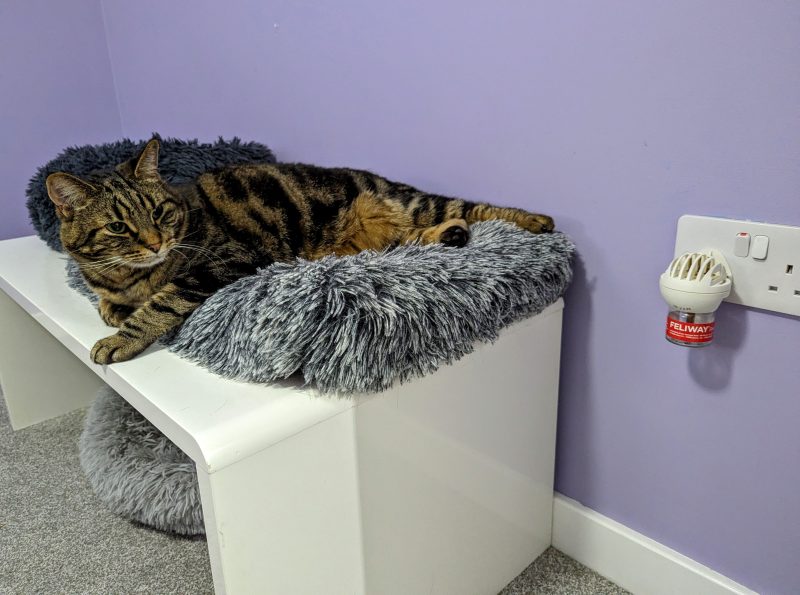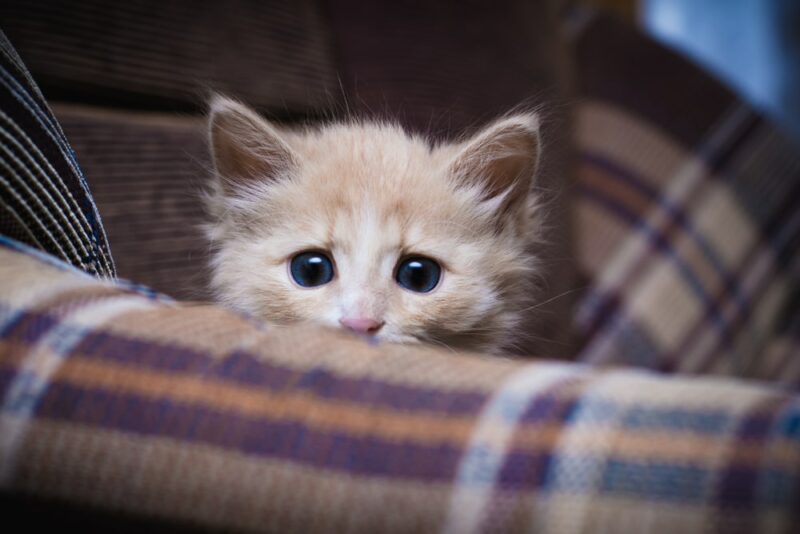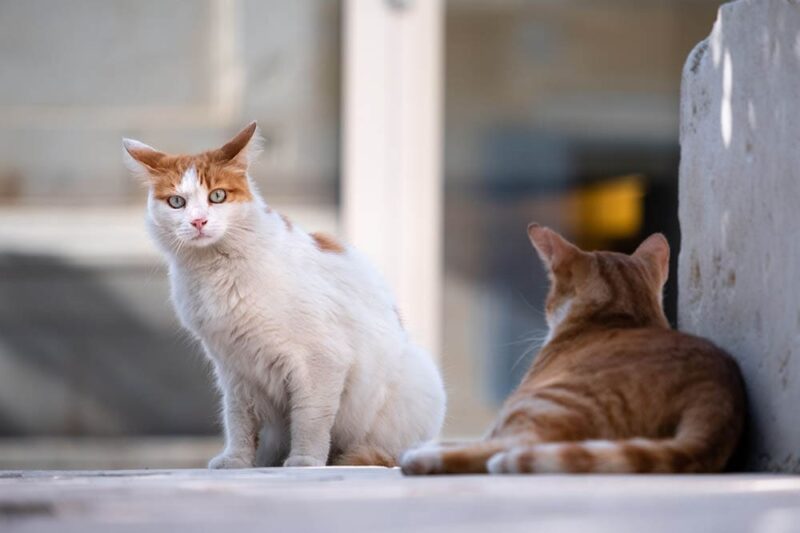When you spend your life surrounded by cats, it’s inevitable that you will become familiar with a wide assortment of sounds and actions, with some that are normal and some that are not so normal. Reverse sneezing isn’t something commonly seen in cats, and fortunately, it is rarely associated with anything too worrying. However, it’s important to know how to distinguish reverse sneezing from some other respiratory quirks and when to be concerned.
If you have seen your cat stretching their neck and loudly snorting air in through their mouth and nose, you are likely seeing a reverse sneeze. Let’s take a look at what reverse sneezing is, what causes it, and what else it might be.

What Is Reverse Sneezing in Cats?
To understand reverse sneezing, it helps to picture what happens when we sneeze. It usually starts out with irritation in the nose, which causes us to take a deep breath in and forcefully expel the air using our diaphragm. Also known as paroxysmal respiration, a reverse sneeze is essentially exactly what it sounds like. It usually starts with irritation of the nasopharynx (the area where the sinuses enter the throat), which causes a spasm reflex in the diaphragm, causing air to be forcefully drawn in through the mouth and nose.
Sneezing and reverse sneezing are both reflexes designed to push irritants out of the nose or pull them away from the nasopharynx. In cats, this is often mistaken for vomiting, as the movement of the diaphragm looks like abdominal heaving.
In most cases, cats do not appear overly distressed when they reverse sneeze and recover quickly, which is one factor that can help us differentiate it from other conditions.
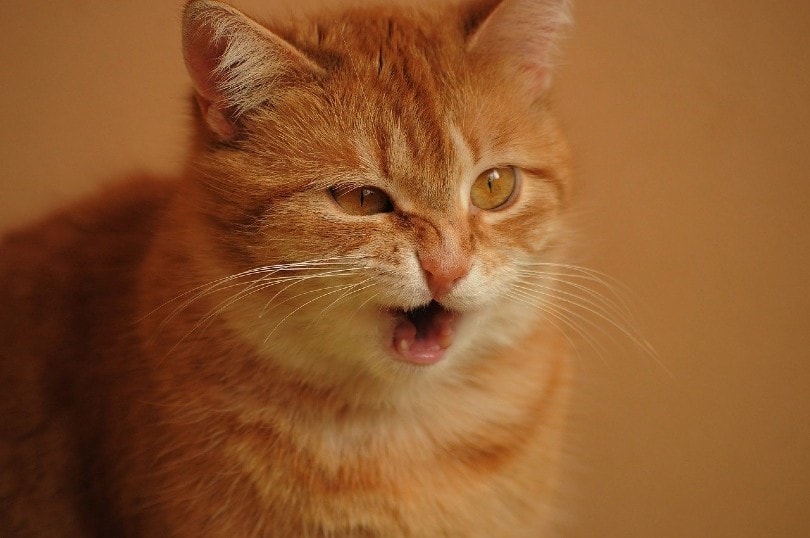
What Causes Reverse Sneezing in Cats?
Reverse sneezing occurs more commonly in dogs, and overwhelmingly so in brachycephalic breeds, like Pugs or French Bulldogs. Because of the compression of their internal facial structures, their soft palate regularly becomes trapped and triggers this reflex. Other causes in dogs include pulling on a leash and compressing the airway, eating, or drinking too quickly, and excitement.
- Physical irritants (e.g., dust, grass, pollen, or hair)
- Mass or tumor (e.g.,nasopharyngeal polyp)
- Infection
Most physical irritants will be shifted by the act of reverse sneezing. However, one common presentation in cats is grass that has become trapped behind the soft palate. This can often be dealt with by flushing the sinuses but often requires removal under a general anesthetic.
If infection is the cause, we would expect to see additional signs, such as nasal discharge, watery or sticky eyes, inappetence, and lethargy.
If the reverse sneezing is due to a growth, such as a tumor or nasopharyngeal polyp, it will often be accompanied by snoring and increased respiratory sounds, and we would expect the signs to progressively get worse.
What Else Could It Be?
- Choking: This is in an emergency. If your cat is choking, they will become extremely distressed, their eyes may bulge, and their gums may appear blue or purple in color. If you can see the cause of the choking, safely try to remove the object. If not, lay your cat on their side and, placing a flat hand on either side of the chest, push or pat the rib cage in an attempt to force the object out of the airways. Ideally, do this on the way to the veterinary hospital.
- Ejecting a Hairball:You’ve probably heard the term “cough up a hairball,” which is a bit misleading. The hairball is in the esophagus, so it is not being coughed up, but the action a cat uses to try to expel it does look like they are coughing or gagging. Cats that are bringing up hairballs tend to sit close to the ground and stretch their neck whilst making a wheezing, hacking sound that is slowly repeated.
This differs from reverse sneezing in that, most of the time, cats reverse sneeze in a standing or seated position, and the sneezes are quite short, sharp, and close together.
- Asthma: A relatively common respiratory disease in cats, the primary presenting signs of feline asthma are a chronic cough, wheezing, difficulty breathing, open-mouthed breathing, and rapid breathing. In early stages, the signs of asthma may resemble reverse sneezing, but as the condition progresses, it becomes clear that this is an issue with the lungs, rather than the upper airway.

Is There a Treatment for Reverse Sneezing in Cats?
In the vast majority of cases, no treatment is needed. Once the stimulus for the sneezing episode has subsided or resolved, the sneezing will also settle. Most episodes last less than a minute, gone as swiftly as they came.
If the reverse sneezing lasts longer than this, you can try using a gentle coupage method. Place one palm flat against one side of the chest. With the other hand, make a cup shape, and gently pat the other side of the chest. This helps force air up through the nasopharynx and open up the airways.
If the problem persists or if your cat is having regular episodes of reverse sneezing, you should make an appointment with your vet.
If you need to speak with a vet but can't get to one, head over to PangoVet. It's an online service where you can talk to a vet online and get the advice you need for your pet — all at an affordable price!

Can I Prevent Reverse Sneezing?
The best thing you can do to help reduce your cat’s risk of inhaled irritants is to minimize dust and debris in the air, and regular vacuuming is the number one best way to combat this. Make sure your vacuum cleaner uses a HEPA filter. Other things you can do is to use a low-dust cat litter, and, if your cat goes outside, keep them in on windy days or when pollen counts are high.
Making sure your cat sees a vet at least once a year for their annual checkup is one of the best things you can do for your cat. This is when minor changes and subtle signs can be detected, long before your cat lets you know there’s a problem. Issues with the heart or lungs, changes or lumps in the abdomen, inflammation of the ears or throat, and dental disease are all problems that can be picked up on a veterinary exam, which you may not otherwise be aware of.

Final Thoughts
Reverse sneezing in cats is a relatively uncommon event and not usually cause for concern. However, if it becomes a regular occurrence for your cat, or they exhibit any other concerning signs, a visit to the vet is certainly in order. In most cases, the reverse sneeze will stop as quickly as it started, but some cats may appreciate a pat on the chest to help clear the problem.
If you’re not sure if your cat is reverse sneezing, it is always a good idea to make an appointment for a checkup. It is far better to get professional confirmation that everything’s okay than to miss an opportunity to tackle a respiratory problem in the early stages.
Featured Image Credit: ZlataMarka, Shutterstock
